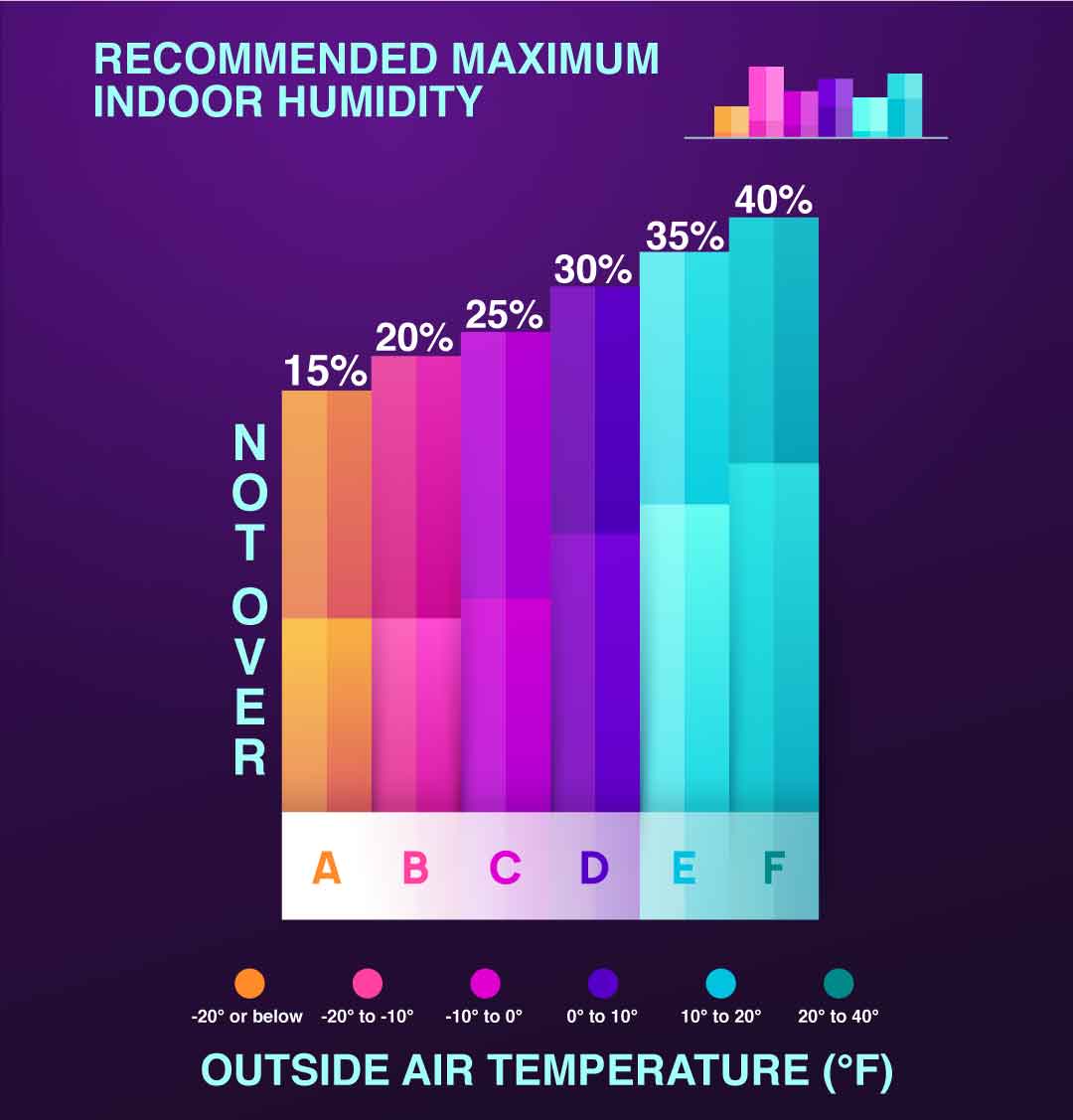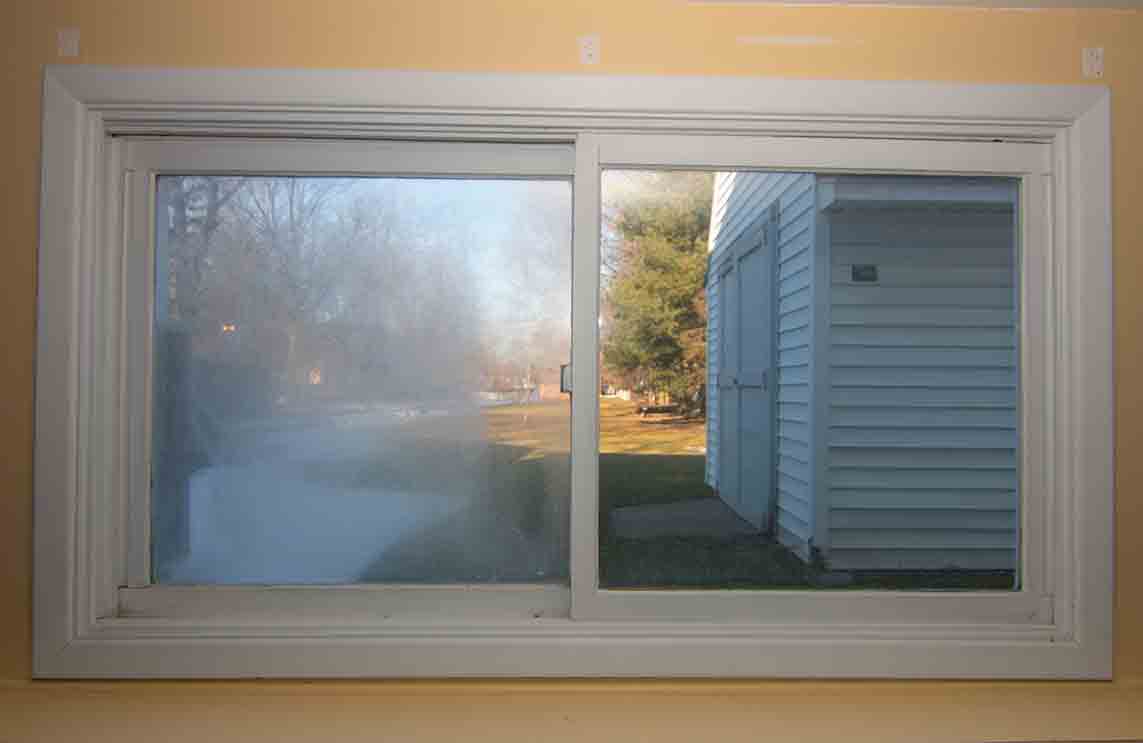Controlling Condensation and Reducing Humidity
Whether you’ve recently replaced your home’s windows or not, you may have noticed a layer of condensation on the glass panes, typically in the morning and seasonally throughout the year as the weather warms up or cools down.
While window condensation is generally nothing to worry about, there are times when it can be a cause for concern. Homeowners reach out to us regularly asking about condensation on their windows, foggy window glass, and how to control condensation and humidity levels in the home.
What Causes Window Condensation?
Condensation forms when the air is fully saturated with water vapor and comes in contact with a window’s glass surface. Think about sitting outside at a backyard BBQ and your glass of lemonade starts to sweat. This is condensation—the same thing that happens to your windows during the summer months. Since your window’s glass is one of the coolest surfaces of the exterior, it’s a natural place for condensation to occur.
However, condensation isn’t exclusive to summer weather. It happens in the winter, too! If you live in a cold climate, the humidity is likely coming from an indoor source with winter window condensation.
Whether the condensation is occurring during the winter or summer, there can be additional factors causing the humidity aside from good old Mother Nature. Let’s talk about more about these sources of humidity.

Causes of Humidity in the Home
Let’s put our science hats on for a minute. When it comes to your windows, condensation occurs when the temperature of your window’s glass drops below the dew point of air inside of your home. The greater the dew point, the higher the amount of moisture in the air. Eventually, the air can no longer contain moisture and is released in liquid form such as fog on your windows.
When it comes to humidity in a controlled climate environment such as your home, these are a few culprits that can make it worse:
- Using water in everyday activities. Washing dishes, cooking, and even taking a shower can introduce extra moisture into the air. Even sweating and breathing can contribute to moisture buildup in the home! (Please don’t stop breathing or bathing to prevent condensation!)
- Leaks around the home. Moisture might be making its way into your home right under your nose. Look around for leaky pipes, cracks in your roof or even loose joints.
- House plants. Plants release moisture into the air through a process called transpiration. When the plant absorbs the water through the roots, it evaporates into the air from the leaves and increases indoor humidity. Some plants that are the major culprits are Peace Lilies, English Ivy, Spider Plants, and Areca Palm.
- Inadequate ventilation. While having a home that is 100% airtight sounds like a great idea, this isn’t always the case. Areas like your bathroom need to allow moisture to escape to prevent humidity and other issues such as mold.
Luckily, there are a few steps you can take to reduce household humidity levels. This can have a direct impact on window condensation.
12 Ways to Reduce Humidity Household Levels
If humidity levels are off the charts in your home, try the following:
- Shut off any household humidifiers (this includes the furnace humidifier). These humidifiers help to bring moisture into the air. They are often used during the winter to help alleviate dry skin, scratchy throats, even asthma and allergies. However, these humidifiers can sometimes release too much moisture into the air and cause high humidity levels in the home.
- Ventilate your home regularly. Air out your home a few minutes each day in high moisture areas, like bathrooms, during use.
- Take cooler showers. Sometimes there is nothing like a long, hot shower. However, if you have humidity issues in your home, this is just adding fuel to the fire. Consider dialing the hot water down a notch—although you don’t need to resort to ice baths!
- Run exhaust fans longer and more often. This is another way to help ventilate your home to combat humidity. Consider having a fan professionally installed in your bathroom if you don’t have one already.
- Open your fireplace damper. Humidity-producing appliances can create a reverse draft through the chimney. This can cause hot air from the roof down through the chimney during the summertime.
- Make sure any louvers in your attic and basement are large enough and open. Since moisture can enter both of these access points through cracks and crevices, keep the louvers open for ventilation.
- Add a dehumidifier to your basement. A dehumidifier pulls moisture out of the air and lowers humidity levels. This is an ideal solution for humid climates as well as climates that experience hot and humid summers.
- Properly vent any humidity producing appliances such as clothes dryers and gas burners to the outdoors. This allows excess moisture to escape and further reduce humidity.
- Dry your clothes outside. If you have the opportunity, try hanging your clothes outside to dry in the sunshine instead of running your clothes dryer.
- Run your air conditioner. Central air conditioning systems act as a dehumidifier on a larger scale. Be sure that you have a clean filter in place!
- Maintain a constant temperature in your home with a heating and cooling system. This can greatly help prevent condensation from forming on your windows.
- Circulate air inside of your home. Take advantage of ceiling fans. Keep the fans rotating in a counterclockwise direction in the summertime. During the winter, rotate your fans in a clockwise direction.
With these 12 tips, you’re well on your way to having a home with a lot less humidity. But how much humidity should you have in your home, anyway?
What is the Ideal Humidity Level for my Home?
To maintain comfort and health in your home, you must maintain a certain level of humidity. The following chart shows the maximum safe humidity levels to a home heated to 70 degrees Fahrenheit. Lower levels are required for higher indoor temperatures.

| Outside air temperature (°F) | Recommended maximum indoor humidity |
|---|---|
| -20° or below | Not over 15% |
| -20° to -10° | Not over 20% |
| -10° to 0° | Not over 25% |
| 0° to 10° | Not over 30% |
| 10° to 20° | Not over 35% |
| 20° to 40° | Not over 40% |
If you want to closely monitor indoor humidity levels yourself, consider investing in a hygrometer. This is an inexpensive tool that measures indoor relative humidity.
As you monitor and track changes with your hygrometer, it should provide insight and help you decide what changes to make in your home. You can even determine activities that make humidity levels rise in your home, such as taking a shower. You may also discover that some humidity problems are seasonal and therefore temporary. This can help you decide whether something needs to change within your home’s environment or bigger issues are occurring with your windows.
Speaking of windows, there are still a few important points we need to address about condensation on your windows.
Is Window Condensation Ever OK?
On a hot and humid summer day, some window condensation is expected. Also, if you wake up in the morning and discover condensation on your windows, open your bedroom window for a few minutes before you go to bed. This helps to balance the inside temperature and decrease moisture levels, so condensation doesn’t occur.
However, there are several instances when window condensation is pointing to a larger problem. Here are a few red flags:
- Condensation that won’t wipe away. You might experience this issue with double or triple pane windows. These windows are tremendous at saving energy, but sometimes condensation will form inside of the panes. If this is the case, it’s a sign that there is a seal failure inside the window. You may also notice that your windows look dirty on the inside. Moisture is getting between the panes and the only way to fix it is to contact a professional window contractor.
- Excess moisture surrounding the window. If you’re discovering moisture in areas such as the window frames, walls, and window sills, you need to take action. If left alone, this damage can result in peeling and flaking of the paint on your window frames. Eventually, mold and mildew can grow around the window and the frames or walls may become damaged.
If you’re constantly dealing with window condensation to no avail, the best solution is to invest in new replacement windows. But how do new windows help prevent condensation?

Fixing Condensation Problems with New Replacement Windows
While you might be tempted to simply replace the glass of your foggy windows, this isn’t always the best course of action to take. You’ll need to consider the age of the window first—if it’s 15 years old or more, you’re better off replacing the entire window instead of just the glass. Also, carefully inspect the frames for signs of rot, mold, and mildew. Single pane windows should also be replaced, not only to resolve condensation issues but to save more energy.
When you have new replacement windows installed, the seals are brand new so it will eliminate the problem of condensation between the glass panes. This keeps the glass of your windows nice and clear!
Furthermore, laboratory studies show that dual pane windows with argon gas and low-e glass are proven to reduce window condensation. A double-pane window with these features allows roughly 37% relative humidity without any indoor condensation. In other words, it can be 70 degrees F inside and 0 degrees F outside without any condensation on your windows. With old single pane windows, there is a 12% allowance for indoor humidity in the same conditions.
Help! My New Windows are Sweating!
Ah, yes. We see this from time to time and there is no need to panic!
The reason that condensation may form on new replacement windows is because they are working well. It’s a sign that they are better insulated than your old windows, leaving old air leaks closed. Keep in mind that the condensation is only temporary and should disappear in a few weeks after new window installation.
Pinpointing the Problem with Window Condensation
The truth is that it can be difficult to always know the exact cause of window condensation. If window condensation has you sweating bullets over the performance of your windows, help is on the way! We can inspect your windows and determine if you are experiencing the bad type of condensation. Contact us with questions (always happy to help!) or learn how to get started with getting rid of problematic window condensation for good by getting a new window replacement from Universal Windows Direct.
Shopping for New Windows? Get the Most for You Money!
Get the inside scope on buying the best value in replacement windows with our free guide.


